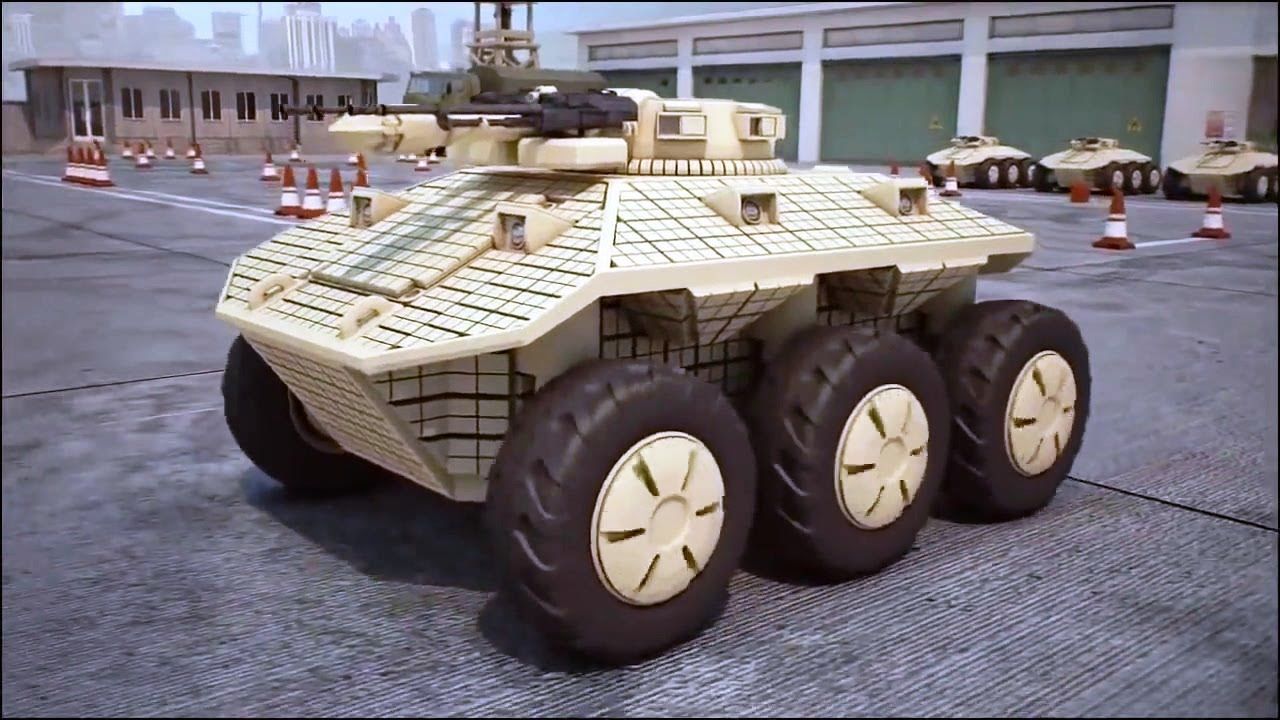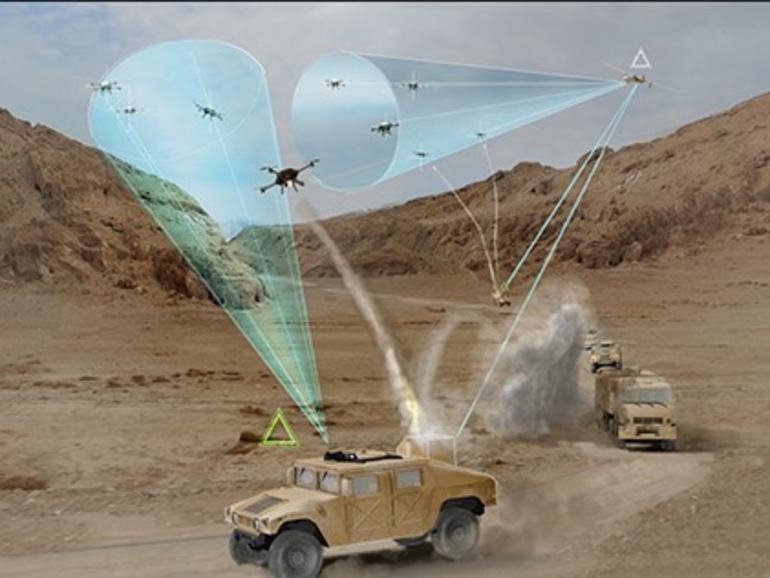Archive for the ‘military’ category: Page 268
Aug 17, 2016
Hezbollah Drone Is a Warning to the U.S
Posted by Karen Hurst in categories: drones, military, robotics/AI
I hate saying “I told you so”; however, it has happened. Whenever, technology is easily acquired means the bad people also has the same access via many sources.
As early as November 2004, Hezbollah sent Iranian-supplied Mirsad drones into Israeli airspace on spy missions, catching Israeli air defenses off guard. Shortly thereafter, Hezbollah leader Hassan Nasrallah proclaimed that the Mirsad could penetrate “anywhere, deep, deep” into Israel while carrying more than 200 pounds of explosives.
It was a bold claim for the time. The United States was the first country to deploy a modern, armed drone—the Predator—in 2001. For several years, America possessed a virtual monopoly on weaponized flying robots.
Continue reading “Hezbollah Drone Is a Warning to the U.S” »
Aug 16, 2016
Should US Unleash War Robots? Frank Kendall Vs. Bob Work, Army
Posted by Karen Hurst in categories: military, robotics/AI

WILLIAMSBURG, Va.: The Pentagon’s top weapons buyer, Frank Kendall, warned today that the US might hobble itself in future warfare by insisting on human control of thinking weapons if our adversaries just let their robots pull the trigger. Kendall even worries that Deputy Defense Secretary Bob Work is being too optimistic when Work says humans and machines working together will beat robots without oversight.
These are unnerving ideas — and top Army leaders swiftly responded with concern that robots would shoot civilians if you take the human out of the loop. This is what Vice Chairman of the Joint Chiefs Paul Selva calls the Terminator Conundrum: “When do we want to cross that line as humans? And who wants to cross it first? Those are really hard ethical questions.” They are also a fundamental question of combat effectiveness.
Continue reading “Should US Unleash War Robots? Frank Kendall Vs. Bob Work, Army” »
Aug 15, 2016
Improved Safety Standards and Changing Regulatory Scenario to Boost the Global Aircraft Synthetic Vision System Market Through 2020: Technavio
Posted by Karen Hurst in categories: business, computing, military
LONDON—(BUSINESS WIRE)—Technavio’s latest report on the global aircraft synthetic vision system (SVS) market provides an analysis on the most important trends expected to impact the market outlook from 2016–2020. Technavio defines an emerging trend as a factor that has the potential to significantly impact the market and contribute to its growth or decline.
Improved safety standards and changing regulatory scenario to boost the aircraft SVS market until 2020. Tweet this
An SVS is a computer-mediated reality system for aerial vehicles, which uses 3D technology to provide pilots with a clear understanding of their flying environment. It was developed by NASA and the US Air Force in the late 1970s and 1980s, in support of air safety and advanced cockpit research.
Aug 15, 2016
DARPA wants your help to take down drones
Posted by Karen Hurst in categories: drones, military, robotics/AI
DARPA recently put out a Request for Information on new ways to protect military forces from small unmanned air systems (sUAS).
Aug 15, 2016
4 Smart Textiles Revolutionizing the Future of Fabric
Posted by Karen Hurst in categories: biotech/medical, computing, military, wearables
Luv it; especially fabric to do time release meds, or bio release meds; or do communications via a shirt or jacket.
With the invention of technology-laden fabrics, otherwise known as smart textiles, we are able to benefit from multifunctional materials.
Smart textiles, also known as E-textiles, smart garments, tech fabrics, and smart fabrics, are materials based on technology that integrate advanced features beneficial to the wearer. In an interview with Forbes, Rebeccah Pailes-Friedman, smart textiles and wearable technologies expert stated, “what makes smart fabrics revolutionary is that they have the ability to do many things that traditional fabrics cannot, including communicate, transform, conduct energy and even grow.” And as crazy as it might sound, having computers and technology literally integrated into our clothing is not only acceptable but may one day be the norm.
Continue reading “4 Smart Textiles Revolutionizing the Future of Fabric” »
Aug 15, 2016
Progress toward real life super-soldiers
Posted by Klaus Baldauf in categories: bioengineering, computing, military
For three years ago U.S. Special Operations Command and DARPA announced they had started work on a super-soldier suit called TALOS (Tactical Assault Light Operator Suit) unlike anything in the history of warfare. It is engineered with full-body ballistics protection; integrated heating and cooling systems; embedded sensors, antennas, and computers; 3D audio (to indicate where a fellow warfighter is by the sound of his voice); optics for vision in various light conditions; life-saving oxygen and hemorrhage controls; and more.
It aims to be “fully functional” by 2018. “I am here to announce that we are building Iron Man,” President Barack Obama said of the suit during a manufacturing innovation event in 2014. When the president said, “This has been a secret project we’ve been working on for a long time,” he wasn’t kidding.
In 1999 DARPA created the Defense Sciences Office (DSO) and made Michael Goldblatt its director. Goldblatt saw the creation of the super-soldier as imperative to 21st-century warfare.
Continue reading “Progress toward real life super-soldiers” »
Aug 15, 2016
Dragonfly drones and lasers: Britain invests £800m in next generation of military technology
Posted by Klaus Baldauf in categories: drones, military, neuroscience
Britain will spend more than £800million funding next-generation military technology including tiny “dragonfly drones” for gathering intelligence and laser weapons to eliminate missiles.
Michael Fallon, the Defence Secretary, will today announce an innovation unit which will encourage individuals and companies to pitch ideas to a panel of experts. The best ideas will be fast-tracked with the support of an £800million fund over the next decade.
Projects which will be funded include a “micro-drone” with tiny flapping wings inspired by the biology of a dragon fly, which could have a “huge impact” on operations in urban environments.
Aug 14, 2016
Think you can take out a swarm of attack drones? DARPA wants to hear from you
Posted by Karen Hurst in categories: drones, military
Pentagon research agency DARPA wants to develop a system that’s capable of countering a swarm of attack drones.
Aug 13, 2016
Innovative Transient Battery Is Designed To Self-Destruct In 30 Minutes
Posted by Karen Hurst in categories: biotech/medical, military, physics
A Mission Impossible Battery that self destructs.
Here at HEXAPOLIS, we have talked about biodegradable electronics that are designed to automatically dissolve once their job is done. Such self-destructing devices could be especially useful in the world of medicine, where implants currently have to be surgically removed, as well as the military. As part of a new research, scientists at the Iowa State University have devised an innovative transient battery, which as its name suggests can melt away in less than 30 minutes.
Technological advancements in recent years have allowed researchers to develop an array of self-destructing electronics that are capable of performing specific functions. Up until now, however, these devices were driven by external power sources. Previous attempts to create transient batteries largely gave birth to contraptions that lacked power, stability and a substantial shelf life. More often than not, they were also quite slow in demolishing themselves. Speaking about the research, recently published in the Journal of Polymer Science, Part B: Polymer Physics, the team stated:
Continue reading “Innovative Transient Battery Is Designed To Self-Destruct In 30 Minutes” »

















